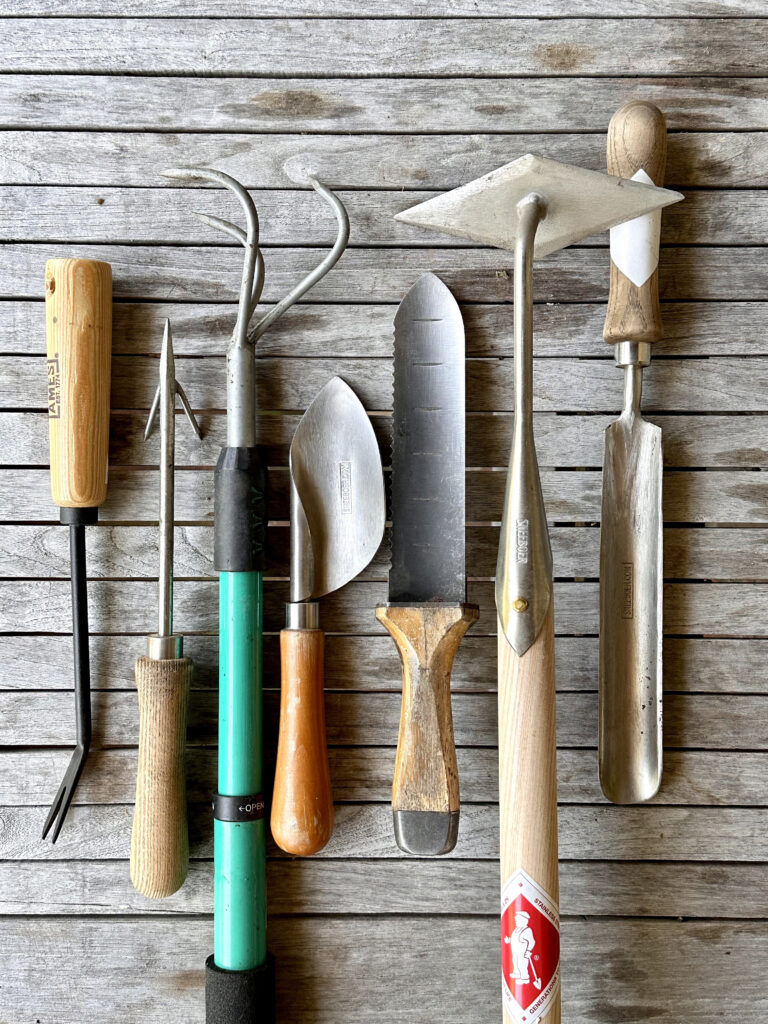 Determining whether a plant is a weed is a subjective thing. Most gardeners define them as plants that just happen to be in the wrong place. But there’s another layer to what makes weeds weedy: they are highly skilled at survival. Some are good at seed dispersal (by floating them through the air, being pooped out by birds, or sticking to clothes or fur) or because they have roots that could survive being buried under concrete (hello Japanese knotweed).
Determining whether a plant is a weed is a subjective thing. Most gardeners define them as plants that just happen to be in the wrong place. But there’s another layer to what makes weeds weedy: they are highly skilled at survival. Some are good at seed dispersal (by floating them through the air, being pooped out by birds, or sticking to clothes or fur) or because they have roots that could survive being buried under concrete (hello Japanese knotweed).
I have been gardening for three decades. But this spring, as I was trying to keep ahead of the green army encroaching on my garden beds, I realized I had never bothered to learn the names of my weeds. Perhaps I felt the less I knew about them, the less they’d come around. Wrong. So, this year, I’m trying to learn more about them — what they like, and, more important, what they dislike. For the latter, I use only organic methods such as hand-weeding or vinegar. I’d love to hear about your favorite (or least favorite) unwanted garden plants.
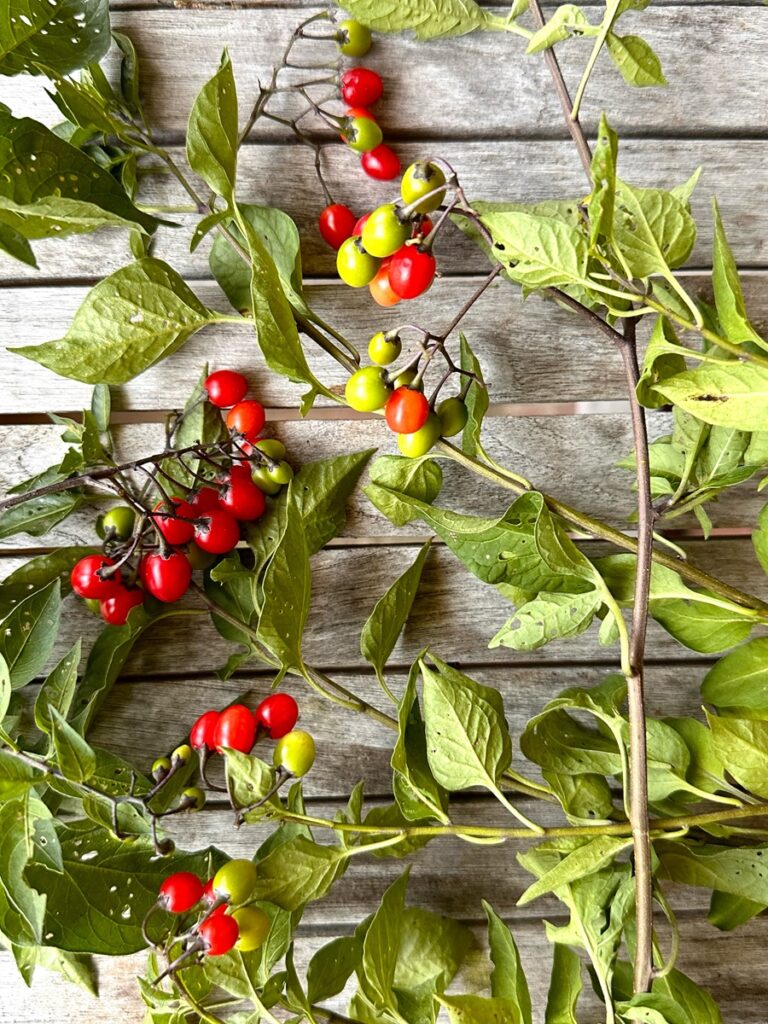
Bittersweet nightshade (Solanum dulcamara) — I find this stiff, lanky Eurasian vine kind of pretty with its purple nightshade flowers that resemble its close relatives, tomatoes, eggplants, potatoes, and peppers. It’s an aggressive spreader, however, so it must go. The flowers are followed by bright red berries, which though tasty to birds are toxic to us. Not as toxic as its other cousin, the European deadly nightshade (Atropa belladonna), which luckily doesn’t grow here as a weed. Removal method: a hearty double-fisted yank (with gloves for protection against toxicity) that will reveal an extensive system of runner roots.
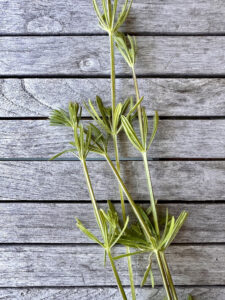
Cleavers (Galium aparine) — Also known as stickywilly, grip grass, and catchweed bedstraw, this plant is an advantageous climber that can quickly scramble up a hedge with its sticky, clingy leaves and stems, growing up to six feet when your back is turned. Cleavers may look spindly, but it has a hidden superpower: it sports extremely annoying seeds that will attach themselves readily to clothes or animal fur. Removal method: Do not let the plant flower and set seed. Grasp the fragile stems close to the ground so you make sure to get the roots.
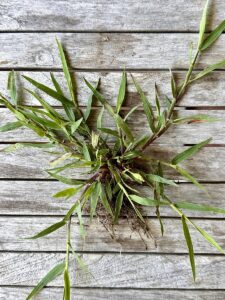
Crabgrass (Digitaria ischaemum) — Like other weedy grasses, this ground-hugging plant seems to have evolved to avoid lawn mowers and weedwhackers. This time of year, I find myself in a constant battle with the warm weather grass clan. Removal method: It can form large clumps with tenacious roots so strike early and often when the plants are young. In gravel or sandy spots use a scuffle hoe.

Hedge bindweed (Calystegia sepium) — This native morning glory relative might look dainty with its silky white trumpets, but it can be a beast because of its shallow but extensive root system. Like other highly successful but noxious weeds (yes, hello again, knotweed), just a fragment of a left-behind root can quickly form a new plant up to 10 feet long. Other common names include devil’s vine or lady’s nightcap. An imported cousin, field bindweed, is also a widespread pest. Removal method: pulling by hand, while attempting to leave no bits of it behind. No small feat.
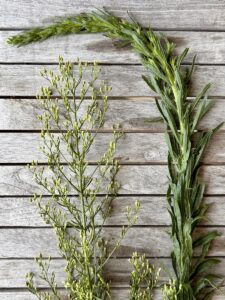
Horseweed (Erigeron canadensis) — This guy is super ubiquitous and super boring. It’s everywhere: in the road median, in the Stop & Shop parking lot, and, of course, in my garden. It shows you it’s happy by growing very tall (sometimes to five feet) but in less advantageous sites it may be only a couple of inches high. As with most weeds, the key is to remove it before it makes seeds. Removal method: by the fistful. This is one of my favorite weeds to deal with because it comes up so easily. Very satisfying for rage-weeding, if that’s your thing.
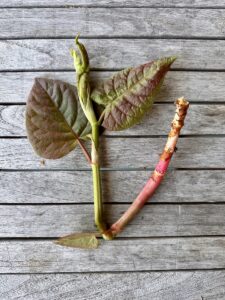
Japanese knotweed (Reynoutria japonica) — My husband calls this The Scourge. First imported to the U.S. in the late 1800s as an ornamental — big mistake — it was viewed as a noxious weed by the 1930s. It’s an absolute nightmare of a plant that can grow to 15 feet tall and turn vast areas of your yard into a bamboo-like forest. Tell people you have knotweed and, after reacting with a look of horror, they will offer a remedy that they readily admit might not work. I’ve heard of everything from rent-a-goats to smothering with thick oilcloth tarps — though a knowledgeable friend told me it would take five years to suppress it that way. The young spring shoots are edible if prepared like asparagus. Removal method: See above and try not to give up. Any piece of root left in the ground will resprout. You might need a support group.
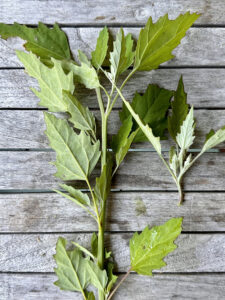
Lambsquarters (Chenopodium album) — I don’t mind this one too much. Any gardener will recognize the soft gray-green leaves, which at maturity seem dusted with silver. It’s very easy to pull but please do so before it sets seed as it is extremely promiscuous. This member of the amaranth family (in the goosefoot genus) is related to quinoa and epazote and popular as a nutritious foraged green that can be prepared like spinach. Removal method: an effortless pluck.
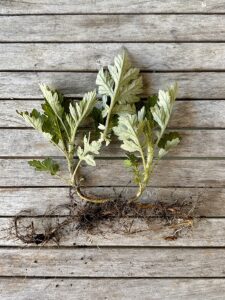
Mugwort (Artemisia vulgaris) — Also known as wild wormwood, this silvery-green plant seems to be everywhere with its tenacious root system. Pull one up and you’ll likely find several other clumps attached to the same shallow roots. Mugwort has many historical herbal uses, but in the garden it tends to prefer the edges of beds or disturbed areas. Removal method: regular and frequent yanking, aiming to get as many roots as possible.
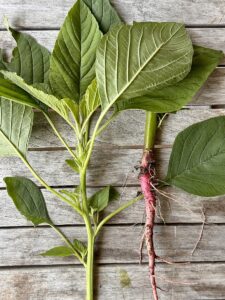
Pigweed (Amaranthus retroflexus) — This homely cousin of the tall colorful garden amaranths looks like it would be easy to pull up, but don’t be fooled. The small radish-like pink root is tenacious and easily breaks off. This midsummer arrival loves the heat. Removal method: use a long-bladed weeding tool to bring up the entire root.
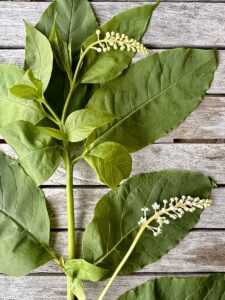
Pokeweed (Phytolacca americana) — Statuesque, with wide-spreading leaves and dangling purple berries, this North American native is a visual showstopper and a haven for bird life. All sounds good until you learn what a pest it can be. The berries may spread everywhere via our avian friends, but what’s more challenging is a deep, stubborn root. Though the plant has been eaten by humans for centuries, it is highly poisonous unless the leaves are prepared properly and at the right time. Removal method: I use a shovel to get the whole root.
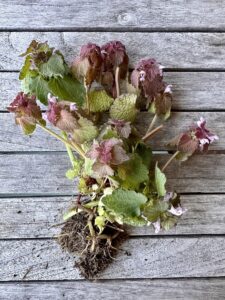
Purple deadnettle (Lamium purpureum) and henbit (L. amplexicaule) — I’m so fond of these two spring beauties that I barely want to refer to them as weeds. They flower in April, when very little else is blooming, providing an early food source for pollinators. Removal method: they come up easily by hand, but I always let them bloom first, then I try to grab them before they set too many seeds.
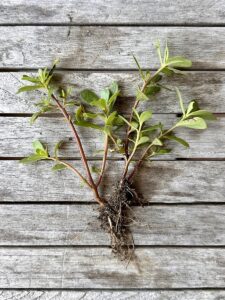
Purslane (Portulaca oleracea) — This is one of the most commonly eaten garden weeds, along with garlic mustard and chickweed. Highly nutritious, it’s also a relative of the container garden favorite portulaca or desert rose. The water-bearing stems and leaves handle drought easily in midsummer and the plant can often be found growing between vegetable garden rows or along pathways, looking pert on even the hottest days. Removal method: easily by hand or with a scuffle hoe.
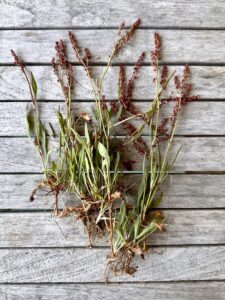
Red Sorrel (Rumex acetosella) — I inherited thick colonies of this low-growing spring weed. It comes out fairly easily but can be exhausting because of densely growing rhizomes. It likes acidic sandy soil (check!) and tends to peter out by midsummer. Its tart leaves are edible, hence the name sourgrass. Removal method: insistent and constant hand-pulling in early spring.
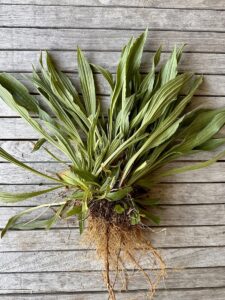
Ribwort plantain (Plantago lanceolata) — This clump-forming Eurasian weed often grows in places where the soil has been disturbed. It’s distinguished from its cousin, greater plantain, another common weed, by its narrow leaves and thimble-like flowers. Removal method: grasp where the leaves meet the soil and give a strong yank or use a deep-bladed weeder.
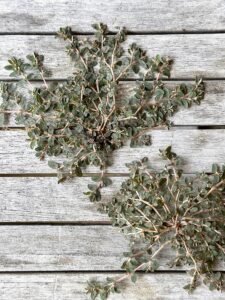
Spotted spurge (Euphorbia maculata) — Talk about survivors, this low-profile driveway denizen loves nothing more than exploiting each and every crack in your driveway or pavers. This heat-lover forms wide fans of silver-blue leaves and succulent pink stems that contain a milky sap (which like other members of the Euphorbia family can be irritating to the skin). Its love of dry soils earns it the apt name sandmat. Removal method: Tedious removal with a small weeder that can get into tiny cracks or use vinegar. In sandy or gravel areas, use a scuffle hoe.
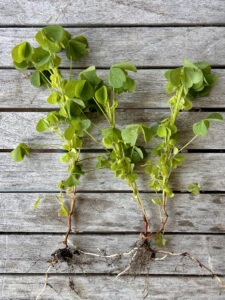
Yellow wood-sorrel (Oxalis stricta) — Another edible plant nicknamed sourgrass, this clover-like plant is ubiquitous as a garden weed but easy to remove. The problem is that just keeping up with its rampant spread at some times of the year can be a daily chore. Pale yellow flowers come in midsummer. Removal method: easily pulled by hand.



